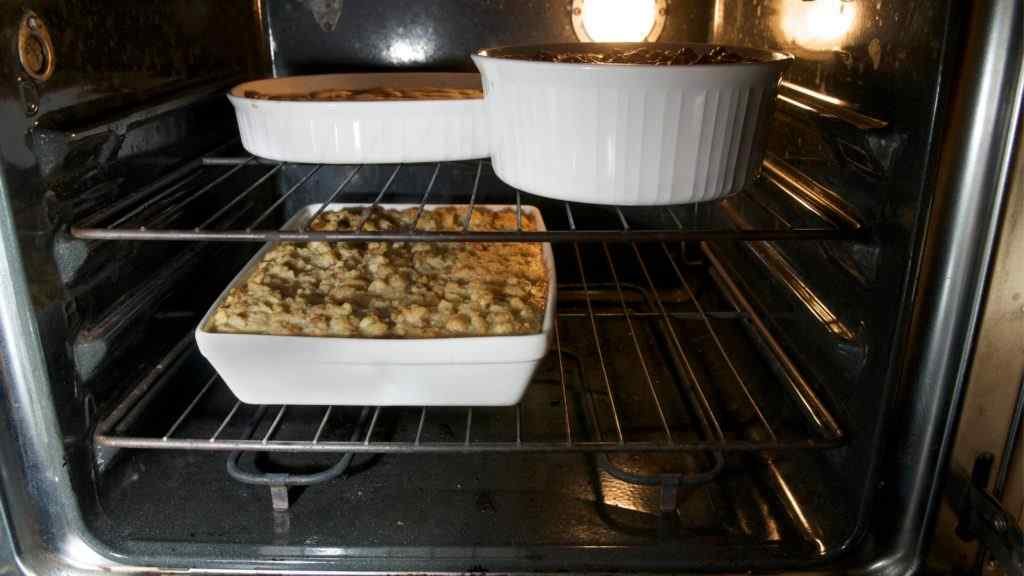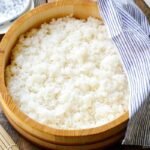Warming up leftovers is more of an art than a simple task, requiring the right blend of temperature and time to revive a meal as if it were freshly made.
A golden rule? Aim for 350°F for about 10-20 minutes. But the secret sauce to making yesterday’s dishes taste like today’s gourmet meal is tucked away in understanding the nuances. What’s the magic behind this culinary revival? Let’s find out.
Why Oven Reheating is the Best Method for Leftovers

Reheating leftovers in the oven is superior to other methods due to its even heat distribution, which helps maintain the food’s original texture and flavor.
Unlike microwaves that can unevenly heat and sometimes make food soggy, the oven’s consistent warmth revitalizes dishes to closely resemble their freshly cooked state.
The gentle, all-around heat not only thoroughly warms the food but also restores the crispiness or tenderness meant by the initial cooking.
Opting for oven reheating means choosing a process that honors the dish’s essence. It’s about transforming leftovers from merely edible to truly delightful.
This technique excels with foods requiring a crispy outside and moist inside, such as roasted meats or baked goods. The oven’s air circulation ensures each part reaches the perfect temperature without overcooking or drying.
Choosing to reheat with an oven is about enhancing the dining experience. For those who prioritize meal quality and pleasure, the outstanding results of oven reheating are evident. It’s a method that reliably promises a fulfilling meal, making it the top choice for food lovers.
Prepping Your Leftovers for the Oven

Knowing how oven reheating is superior, preparing your leftovers properly is key to getting the most out of this method. Evaluate what type of food you’re warming up.
Items that lose moisture easily, like casseroles or baked dishes, should be covered with aluminum foil to keep them from drying out. For foods you want to keep crispy, such as roasted vegetables or pizza, leave uncovered so the dry heat can work its magic.
The temperature setting is critical. Foods taken directly from the fridge should sit out for about 10 to 15 minutes before going into the oven. This step lessens the temperature shock and helps the food heat more evenly once inside the oven.
The choice of container matters: ensure it’s suitable for oven use. Glass or ceramic containers are preferred because they distribute heat evenly, but metal pans can be used for items where a crispy edge is desired.
Arranging your food in a single layer, when feasible, ensures consistent heating, avoiding parts that are overly hot or still cold. Following these steps prepares your leftovers to be nearly as enjoyable as when they were first cooked.
General Reheating Instructions For Various Foods
| Food Item | Oven Temperature | Reheating Time |
|---|---|---|
| Pizza | 375°F (190°C) | 5-7 minutes (thin crust) |
| 7-9 minutes (thick crust) | ||
| Casseroles | 350°F (175°C) | 20-30 minutes |
| Lasagna | 325°F (165°C) | Up to 45 minutes |
| Chicken | 250°F (120°C) | 10-15 minutes |
| Steak | 250°F (120°C) | 20-30 minutes |
| Seafood | 145°F (63°C) | Varies by thickness |
| Bread | 350°F (175°C) | 10-15 minutes |
| Muffins | 325°F (160°C) | Up to 10 minutes |
| Pastries | 200-250°F (93-121°C) | Until warmed through |
| Pasta (without sauce) | 350°F (175°C) | 10-15 minutes |
Notes for the table:
For pizza, the oven should be preheated to 375 degrees Fahrenheit, and the pizza should be reheated for 5 to 7 minutes for thin crust, or 7 to 9 minutes for thicker crusts. Casseroles should be reheated at 350 degrees Fahrenheit for 20 to 30 minutes, while lasagna is best reheated at 325 degrees Fahrenheit for up to 45 minutes.
Chicken, steak, and seafood should be reheated at lower temperatures of 250 degrees Fahrenheit for chicken and steak, with the time varying for seafood depending on its thickness, but ensuring an internal temperature of 145°F for 15 seconds.
Baked goods like bread, muffins, and pastries can be reheated at temperatures ranging from 200 to 350 degrees Fahrenheit, with bread and muffins taking up to 10-15 minutes, and pastries until they are warmed through. Pasta without sauce can be reheated at 350 degrees Fahrenheit for 10-15 minutes.
1. Light Foods

To properly heat light meals such as spinach puffs, stuffed mushrooms, or chicken rumaki, plan for about 15-25 minutes in the oven.
This amount of time is optimal for ensuring these dishes are warmed through without risking damage to their texture or taste. Keeping a close watch during the heating process is vital, as these types of foods are prone to overcooking or becoming too dry.
Here’s a simplified guide for reference:
| Food Item | Heating Time (Minutes) |
|---|---|
| Spinach Puffs | 15-20 |
| Stuffed Mushrooms | 15-25 |
| Chicken Rumaki | 20-25 |
| Mini Quiches | 15-20 |
| Cheese Bites | 10-15 |
2. Medium Foods

Transitioning from lighter dishes, it’s essential to highlight that mid-sized meals such as chicken dishes, stuffed peppers, filet tips, roasted potatoes, or frittatas need a slightly longer time to reheat properly, with ideal times falling between 30-45 minutes.
To ensure these types of meals are warmed thoroughly and maintain their taste, follow these suggestions:
- Warm your oven to 350°F before placing your meal inside, guaranteeing a consistent temperature for uniform reheating.
- Shield your meal with aluminum foil to keep the top from scorching or drying out before the center is adequately warmed.
- Perform regular checks – While the recommended duration serves as a solid starting point, variations in oven performance and the thickness of the meal might necessitate adjustments to the heating time.
3. Heavier Foods

Turning our attention to more substantial meals, we find that heftier dishes such as lasagna, other types of pasta, mashed potatoes, or bread puddings demand more time to warm up properly, often requiring between 45 minutes to over an hour.
| Food Type | Reheating Time | Temperature |
|---|---|---|
| Lasagna | 45-60 min | 350°F |
| Pasta Dishes | 45-55 min | 350°F |
| Mashed Potatoes | 45-50 min | 350°F |
| Bread Puddings | 45-60 min | 325°F |
| Dense Casseroles | 50-70 min | 350°F |
For the best outcomes, covering these meals with aluminum foil can help to prevent the surface from becoming too dry or charred, ensuring a more uniform distribution of warmth throughout the dish. Patience is crucial for perfectly warming up these hearty meals while preserving their texture and taste.
Reviving Dry Foods in the Oven

Reviving dry foods in the oven requires a nuanced approach to reintroduce moisture without altering texture.
When dealing with leftovers or any dry food item, the oven can be a game-changer, but it’s essential to adhere to specific steps. Here’s how to effectively rejuvenate your dried-out meals:
- Preheat your oven to a gentle warmth, around 200-250°F (93-121°C). This controlled temperature aids in slowly bringing back moisture without causing further dryness.
- Add moisture. For foods like rice or pasta, lightly sprinkle a few tablespoons of water or broth over them before sealing tightly with aluminum foil. This enclosed setting allows the food to steam, ensuring even moisture distribution.
- Covering properly is essential. Using an oven-safe dish with a lid or sealing with foil aims to retain steam and moisture internally. This strategy works well for bread, and you can even include a water bath in the oven to create additional steam.



